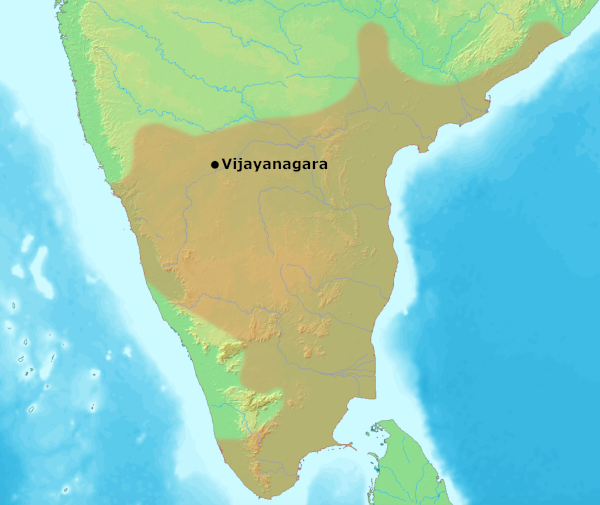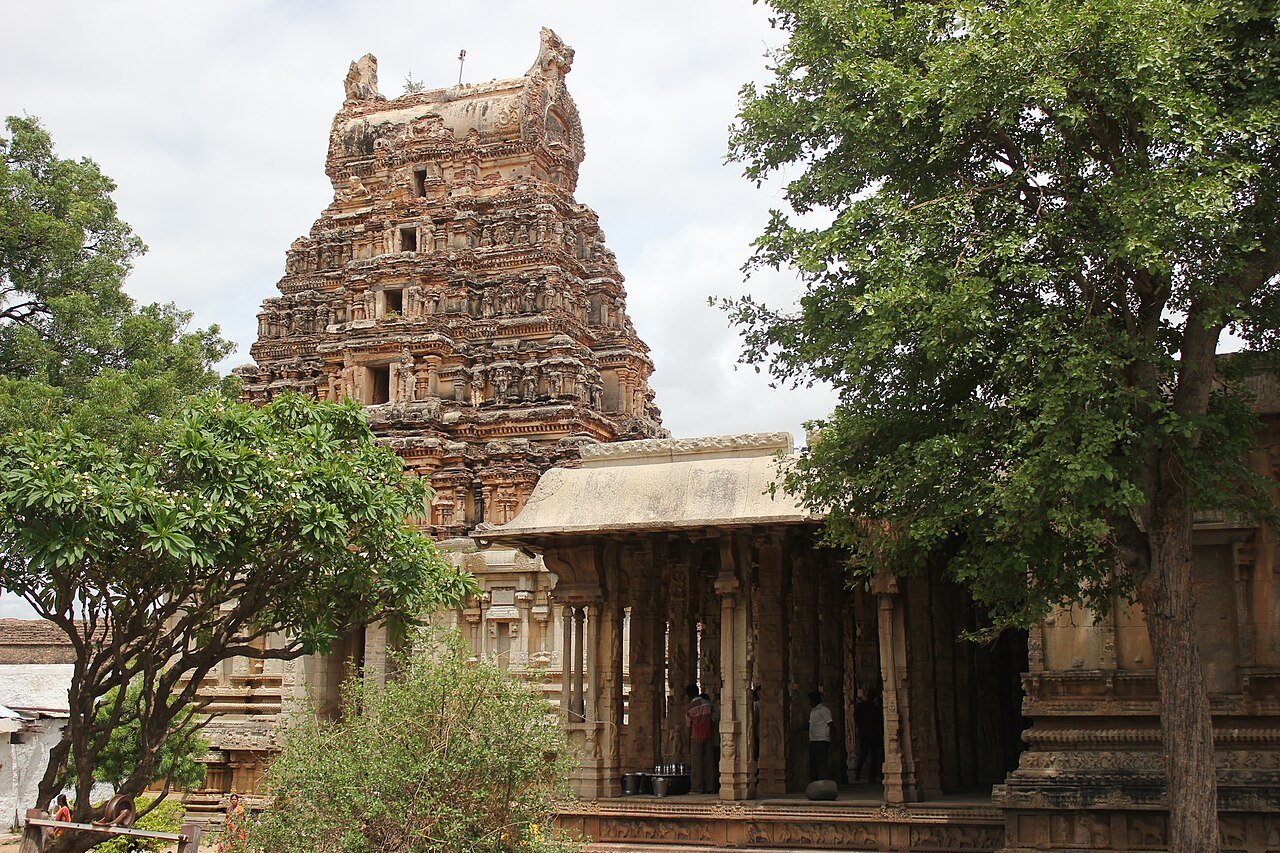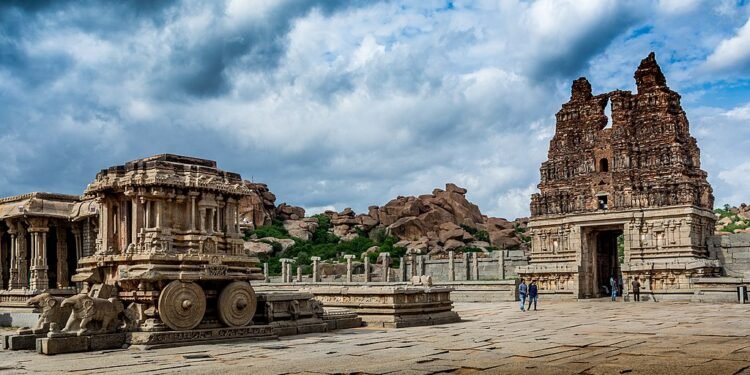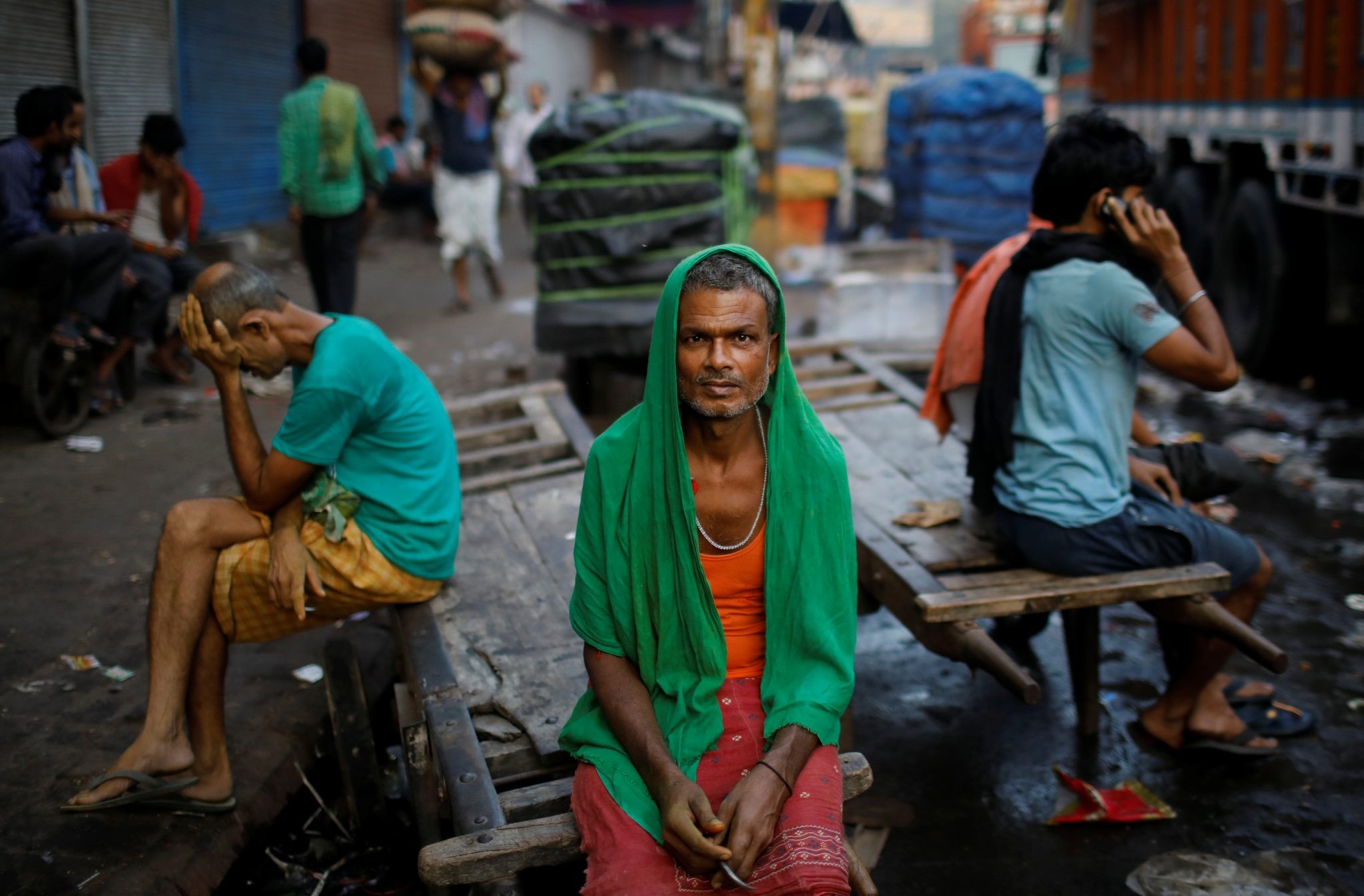Introduction
The Vijayanagara Empire emerged in 1336 CE on the Tungabhadra, when brothers Harihara (Hakka) and Bukka established a new southern sovereignty as Delhi’s hold weakened after Muhammad bin Tughluq’s disruptive experiments and the rise of the Bahmani Sultanate in the Deccan. Over three centuries, Vijayanagara unified much of peninsular India, institutionalized an innovative nayankara military‑fiscal system, and forged a temple‑urban civilization centered at Hampi that foreign visitors compared in scale and prosperity to Rome, until a Deccan coalition shattered imperial power at Talikota in 1565.

Geopolitical background
Early 14th‑century south India was reordered by Khalji–Tughluq drives that briefly extended Delhi’s arm to Madurai, followed by administrative overreach—token currency, capital relocation to Daulatabad, uneven extraction—that loosened northern control. In the Deccan, the Bahmani Sultanate proclaimed independence (1347), contending for fertile deltas and horse‑import corridors; regional houses in Andhra and Tamil country faced raids, tribute demands, and shifting suzerainties that opened space for a southern consolidation.
Founders and the four dynasties
Harihara and Bukka, operating along the Tungabhadra‑Krishna belt, founded Vijayanagara to secure frontier tracts and river doabs, soon absorbing residual polities and confronting Bahmani expansion. The empire’s long arc spans four lines—Sangama (founders), Saluva, Tuluva (Kṛṣṇadevarāya’s house), and Aravidu—each inheriting and adapting the same core instruments: fortified capitals, doab contests, temple‑urban finance, horse supply, and nayankara deployments.
Strategic geography and early expansion
At its height, Vijayanagara’s northern reach pressed to the Krishna, while it dominated the southern peninsula from the western ghats to Coromandel ports. Strategy focused on three contested zones:
Tungabhadra doab: Shield and springboard vis‑à‑vis Bahmani forts; a frontier of repeated campaigns.
Krishna–Godavari deltas: Granaries and customs hubs; control of canals and barrages meant revenue resilience.
West coast ports (Goa belt): Gateways for horse imports and overseas commerce; maritime access multiplied leverage across the interior.
Bahmani rivalry and balance of power
From Bukka’s time, rivalry with the Bahmanis defined the northern theater—an oscillating contest over the doab, deltas, and ghats that shaped diplomacy and force structure. Devaraya I absorbed early setbacks, paying compensation and marrying diplomatically, then exploited fissures among Deccan powers to reclaim ground, foreshadowing the long rivalry that would later continue with successor sultanates (Bijapur, Golconda, Ahmadnagar).
Military‑fiscal innovation: the Nayankara
Vijayanagara’s signature institution assigned land‑revenue rights (amaram) to nayakas (military chiefs) in return for maintaining contingents, fortifying locales, and serving on campaign—akin to but distinct from iqta by its tighter rotational control and temple‑embedded finance. The crown transferred nayakas to prevent entrenchment, audited forces, and used temple treasuries and market customs to smooth cash‑grain flows, creating a flexible field army suited to frontier warfare. Over time, some nayakas (notably in the 17th century) crystallized into independent houses, contributing to post‑imperial fragmentation.
Capital, fortifications, and urban scale
Hampi (Vijayanagara), straddling boulder fields and river bends, fused defense with spectacle: citadels, markets, waterworks, and temple complexes formed a vast urban ecology that astonished foreign envoys. Domingo Paes likened its scale to Rome; Abd al‑Razzāq called it unparalleled, noting ringed fortifications, cultivated belts within outer works, and market abundance—a city designed as a living arsenal, granary, and ritual theater.
Temple architecture and civic economy
Under imperial patronage, temple architecture reached a mature phase—tall gopurams, extended mandapas, processional streets, and chariot shrines—turning sacred precincts into civic engines of labor, credit, and redistribution. The Virupaksha complex’s expanded gopurams, the stone chariot and musical‑pillar mandapas at the Vittala temple, and hydraulic works (tanks, canals, stepped wells) exemplify an integrated ritual‑infrastructure economy that financed festivals, welfare kitchens, and artisanal guilds.
Courts, culture, and pluralism
Vijayanagara rulers styled themselves devout Hindu sovereigns yet governed with pragmatic pluralism—employing Muslim archers and cavalry specialists, engaging Portuguese captains at Goa, and hosting scholars across Sanskrit, Telugu, Kannada, and Tamil traditions. Kṛṣṇadevarāya’s court became a byword for literary brilliance: the aṣṭadiggajas (eight luminaries) in Telugu, alongside Sanskrit works authored by the king, signal a cosmopolitan pedagogy woven into royal image‑making.
Kṛṣṇadevarāya and the imperial apex
Crowned in 1509, Kṛṣṇadevarāya drove victories against the Gajapatis in Odisha and the Deccan successor states, reviving the Tungabhadra contest, securing deltas, and cementing trade ties with the Portuguese. He personally led from the front, tended to wounded soldiers, and invested in hydraulic and temple projects—his reign a synthesis of battlefield authority, infrastructural statecraft, and cultural patronage that later chroniclers cast as a “golden age.”
Economy, trade, and diamonds
Markets at Hampi overflowed with goods “from precious stones to basic necessities,” reflecting agrarian surplus tied to craft guilds and maritime circuits; diamond fields in the Krishna–Tungabhadra region underwrote luxury trades. Control of west‑coast ports ensured horse imports and access to the Indian Ocean economy, while inland levies and delta customs fed both the treasury and temple endowments—an interlocked fiscal system reinforcing military readiness and urban prosperity.
Society and social orders
Sources describe right‑hand (Vaishnava) and left‑hand (Shaiva/mercantile/artisanal) caste blocs mediating urban order; women held notable positions (accountants, judges) in some accounts even as practices like devadasi service, polygamy, child marriage, and sati persisted variably across regions and status groups. The court’s public religiosity and festivals knitted social coalitions to imperial legitimacy, but also entrenched hierarchies within the civic‑ritual economy.
Stress points and decline
Succession frictions after Kṛṣṇadevarāya (from 1528) weakened the center; Deccan sultanates coordinated more effectively, culminating in the Battle of Talikota (1565), where a united front smashed the imperial army and sacked Hampi. The court relocated (Penukonda, then Chandragiri), while powerful nayakas (e.g., in the Tamil country) asserted autonomy, marking the shift from centralized empire to a constellation of successor states, even as architectural and institutional legacies endured.
Why the foundation mattered
Southern consolidation: Vijayanagara converted post‑Tughluq flux into durable peninsular unity with a frontier‑aware capital, creating a counterweight to Deccan polities for two centuries.
Institutional template: Nayankara tied war‑making to land‑revenue in a rotational, audit‑friendly way, influencing later regional militarized polities.
Temple‑urban state: By embedding archives, credit, markets, and welfare in temple complexes, Vijayanagara engineered a resilient civic economy that multiplied cultural prestige and logistical depth.

View of tower and mantapa at Ragunatha temple in Hampi | Source: Wikipedia
High‑yield anchors
Founders and date: Harihara and Bukka, 1336 CE, on the Tungabhadra.
Four lines: Sangama, Saluva, Tuluva (Kṛṣṇadevarāya), Aravidu.
Core rivalries: Bahmani (later Bijapur, Golconda, Ahmadnagar); contests over Tungabhadra doab, Krishna–Godavari deltas, Goa corridor.
Institutions: Nayankara (amaram grants), rotational transfers, temple‑market finance; fortified capital at Hampi.
Apex and fall: Kṛṣṇadevarāya’s expansion and patronage; Talikota (1565) sack; post‑capital relocation and nayaka autonomies.
Conclusion
The foundation of Vijayanagara married frontier geography to institutional imagination: a defensible river capital, a rotational nayankara for fieldable armies, and temple‑anchored urban economies that channeled agrarian wealth into culture and war. From Harihara and Bukka’s consolidation to Kṛṣṇadevarāya’s apex, the empire shaped southern polity, architecture, and literature; even its fall at Talikota left behind a durable civilizational template—stone, water, markets, and ritual woven into a statecraft that defined the peninsula for centuries.




